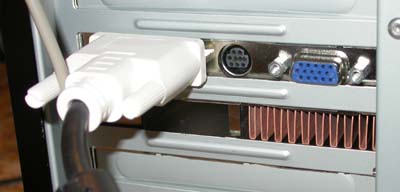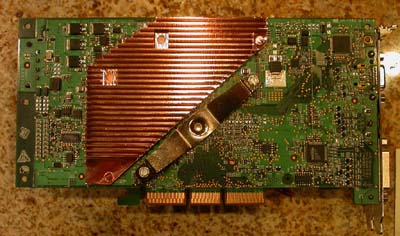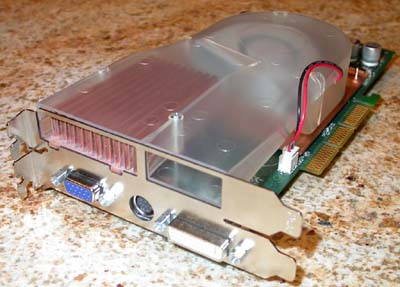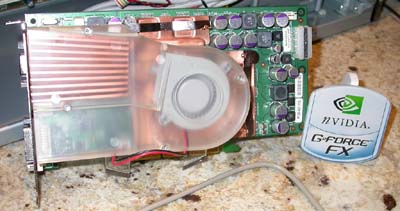NVIDIA Introduces GeForce FX (NV30)
by Anand Lal Shimpi on November 18, 2002 10:13 AM EST- Posted in
- GPUs
FX Flow - Cooling the Beast
The first thing you'll notice about the GeForce FX is that the reference board takes up a total of two slot cutouts on the back of your case. The reason behind this is NVIDIA's FX Flow cooling technology that looks to be a combination of ABIT's OTES and eVGA's ACS2 technology, although NVIDIA did not license it from either of the aforementioned companies.

The cooler takes in cold air from the outside of the case, uses it to remove heat from the heatpipes that run around the GPU and memory devices (on one side of the PCB only) and finally exhausts the air outside of the case. The obvious benefit of this design is that the GeForce FX contributes very little heat to the inside of your case, but the clear downside is that the card occupies two slot cutouts.
NVIDIA has hinted at offering another version of the GeForce FX at a lower clock speed that would only occupy a single slot cutout, but we will have to wait until the product line is announced before we can find out what the differences will be. Our initial guess would indicate that a simple reduction in clock speed would be enough to go with a more conventional cooling setup.
The other issue that users may have is noise, luckily NVIDIA has taken steps to make sure that the GeForce FX is one of the most quiet running cards they've ever produced. Borrowing technology from their mobile parts and combining it with the FX Flow cooling system, NVIDIA is able to dynamically reduce the speed of the fan based on the graphical needs of the system. When sitting in a 2D situation the card will scale back the clock speed of parts of the 3D pipeline that aren't in use, thus allowing the fan to spin much slower. As soon as you start using the GPU for games or any other 3D intensive applications, the clock speeds up as does the fan. The idea is that if you're gaming you're not as concerned with noise as when you are typing in Word.
NVIDIA's FX Flow technology supports a wide range of speed levels to run the fan at; at its loudest the fan is no louder than a noisy Ti 4600.
Just like ATI's Radeon 9700 Pro, the GeForce FX will require a HDD/FDD power connector to operate. If you fail to connect a power cable the card will still work, just at a lower speed and it will display an error on your screen.















0 Comments
View All Comments